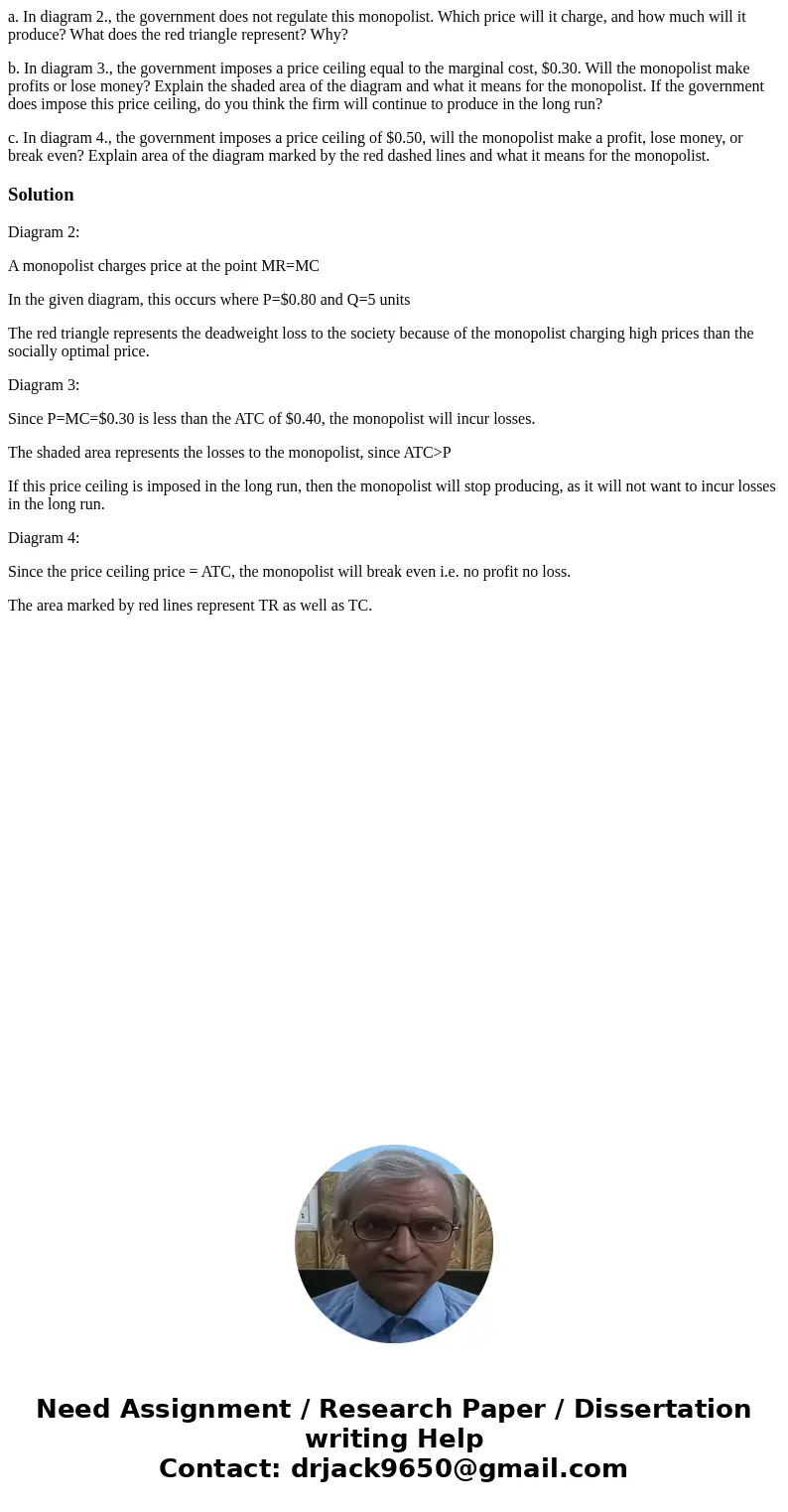a In diagram 2 the government does not regulate this monopol
a. In diagram 2., the government does not regulate this monopolist. Which price will it charge, and how much will it produce? What does the red triangle represent? Why?
b. In diagram 3., the government imposes a price ceiling equal to the marginal cost, $0.30. Will the monopolist make profits or lose money? Explain the shaded area of the diagram and what it means for the monopolist. If the government does impose this price ceiling, do you think the firm will continue to produce in the long run?
c. In diagram 4., the government imposes a price ceiling of $0.50, will the monopolist make a profit, lose money, or break even? Explain area of the diagram marked by the red dashed lines and what it means for the monopolist.
Solution
Diagram 2:
A monopolist charges price at the point MR=MC
In the given diagram, this occurs where P=$0.80 and Q=5 units
The red triangle represents the deadweight loss to the society because of the monopolist charging high prices than the socially optimal price.
Diagram 3:
Since P=MC=$0.30 is less than the ATC of $0.40, the monopolist will incur losses.
The shaded area represents the losses to the monopolist, since ATC>P
If this price ceiling is imposed in the long run, then the monopolist will stop producing, as it will not want to incur losses in the long run.
Diagram 4:
Since the price ceiling price = ATC, the monopolist will break even i.e. no profit no loss.
The area marked by red lines represent TR as well as TC.

 Homework Sourse
Homework Sourse